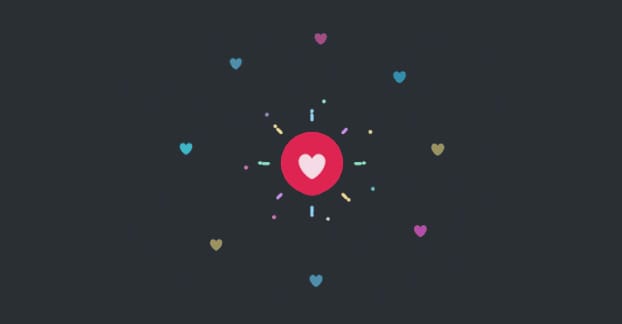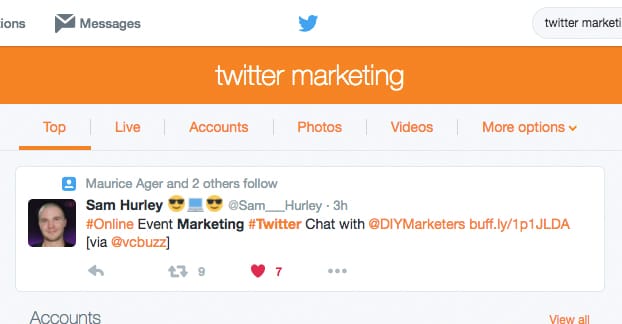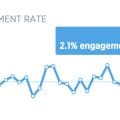One of the most popular strategies Neil Patel uses to grow on Instagram is to go out and like hundreds or thousands of photos that match keywords or use relevant hashtags. He details the strategy here. My question is, does the same thing work with Twitter?
The answer, as you might expect, is yes, though it doesn’t work as well as it does on Instagram, and it doesn’t work as well as it used to back when likes were called Favorites.
The Process
First, let’s take a look at the process you can use to leverage likes to gain followers. The process as a whole is pretty simple, but might have a little nuance if you’re new to this kind of engagement abuse.
The first thing you need to do is give some serious thought to your own brand. What sort of presence do you have, and what sort of presence do you want to build? Know thyself. In particular, you want to give a look to your existing audience – the most engaged of them moreso than the lease – and figure out what kind of qualities they share. This is the same sort of analysis you would do for ad targeting, except we won’t be making use of audience features or of paid ads.
The second thing you want to do is narrow down that above awareness into a few dozen or a hundred keywords. You can really build as big a list as you like, just realize it might take you a while to go through all of them. The more you have, the more possible fodder you can draw from as follow targets. If your list is too small, you’ll be limited to cycling through the same few queries, which might not be active enough to support it. On the other hand, too many and you’ll be bound to miss some people along the way. This isn’t necessarily a bad thing, though; it makes it less obvious what you’re doing.
The third thing to do is set up Twitter searches for the keywords, phrases, and hashtags you picked. You can do this on the fly each time you want to reach out and use this strategy, or you can set up Twitter monitoring and feed watching, so you can see a constantly updating stream of interaction within those keywords.
I would generally recommend that you don’t do much more than bookmark the search results to re-run the search on occasion. The only reason you might want monitoring is if there’s a fast moving feed where you get very high conversions on your engagement prodding. This is unlikely to be the case, though.
When you run a search, all you have to do is scroll down through it and see the content recently posted using that tag. Twitter applies some basic filters, and you can get really advanced with your own if you want, but you don’t need to unless you find a lot of detritus in the results. Even then, it might just be a poor keyword for you to pursue. It’s up to you.
Look for content that is relevant to your audience, that is potentially engaging, that it’s from someone who doesn’t follow you yet, and that it’s compelling for what it is. I might recommend avoiding content that has a lot of likes and retweets already; one more on the pile isn’t going to draw much attention. However, if you happen to catch something posted by an influencer before it has a lot of engagement, you might draw some attention by being one of the first to like it.
When you find these pieces of content and they fit your filtering needs, go ahead and like the post. You can like hundreds of posts per day if you want to spend the time to do so. Twitter has no limit on likes, since they’re more concerned about tweet spam and follower churn, so you can like whatever you want, whenever you want.
I would caution you here against making a bot to do the liking for you. There are favorite bots converted into like bots that you can use, but they have two major flaws.
- Like bots tend to like content indiscriminately. This means if someone posts negatively about your brand and you have it set to like any message about your brand, it will like posts disparaging you. This makes it very obvious you’re a bot.
- Like bots tend to like everything based around a certain keyword, possibly with certain other filters, like “does not currently follow.” This means it’s easy to draw out and trigger, and people will notice that it’s a bot.
Twitter probably won’t punish such a bot, but once people notice that it’s a bot and not “real” engagement, they will be less likely to follow you in response. Further, it will devalue your future engagement. Genuine likes are no different from bot likes, after all, unless you go on to leave a comment as well.
As you like content, I recommend adding other forms of engagement along the way. Particularly good content should be retweeted, and some excellent content should be replied to, particularly if the poster is an influencer whose attention you would like to court. Think about it like you’re trying to lure out a rabbit; the like is a wilted bit of grass, the retweet is a nice piece of spinach, and the comment is the delicious fresh carrot. It’s all bait to get a follow in response, but the more exclusive the engagement, the more valuable it is.
As you go and like content, you send notifications to the poster of that content that it was liked by your account. If that user doesn’t get much in the way of notifications, they are fairly likely to check out your account, if for no other reason than to see what kind of spammer got to them this time. When they see that you’re a real account and, fortuitously, post frequently about the same topics they do, they’re fairly likely to shoot you a follow.
Some old data from 2013 indicates that likes will have around a 3% conversion rate to follows. Like 100 posts and you’ll get 0-5 follows in return, depending on a wide range of factors. That same data indicates that if you’re a high profile influencer – rather than a minor small business or a personal account – your follow rate will be higher, from 5-10%. This data comes from BuzzFork via Quora, and it’s old, so those numbers are probably a bit lower now.
A Decline in Efficiency
Why do I say they’re lower? There are several reasons.
The first major reason is that every social network, over time, sees a decline in engagement by default. You can see this on Facebook, where reach started in the 20% and 15% range for a lot of brands half a decade ago, but struggles to top 6% for a lot of brands today. You can see it on Instagram, which is a special case I’ll go on a tangent on.
A while back Instagram was touted as the absolute highest engagement social network online. This led to a huge rush of brands trying to take advantage of it, and likewise, services trying to take advantage of those brands by selling engagement and followers. These things combine to decrease the overall quality of messaging on the site – making people less likely to engage – and decrease the overall legitimacy of followers. When fewer of your followers are real, your engagement rates drop. These days, Instagram is in the midst of a slump.
The same thing has been happening on Twitter since it was created, more or less. More and more brands pick it up, in part because we marketers talk about how great it is, which is itself fueled by our business models relying on people thinking it’s great. More and more people use the site, and more and more people want shortcuts to the top. Spam and fake followers increase, engagement decreases, people leave the site, and audience quality drops. Through it all, engagement rates fall. This includes likes on Twitter, though they’re still the highest number of all the forms of engagement a brand is likely to get.
The second reason is that Twitter converted favorites into likes. Back when the form of engagement we currently call likes were called favorites, they had a little bit more exclusivity and a little bit more prestige behind them. People felt that having their content favorited was a high mark of honor, even if it was still the most minor form of engagement. Being a favorite set it apart from the trivial Facebook like.
These days, though, they’re simply called likes, and all of that prestige and all of that value has gone. Sure, there was no real functional change, but there was a mental shift, and it has arguably hurt the value of a like. If anything, likes have increased since the change, but the chances of someone coming to follow you based on nothing more than a like have probably dropped. Admittedly, I don’t have firm data on this offhand, but that would be my assumption.
The third reason is simply that the technique is old at this point. Social Times posted about it as the latest Twitter craze back in 2013. As with any technique, the older it is and the longer it’s used, the less effective it becomes. Even if people don’t have experience with it directly, the culture of the site changes over time in adaptation to spam techniques. Not to mention changes to the site itself. I wouldn’t be surprised if the abuse was some minor factor in Twitter’s decision to rebrand likes, but of course there’s no way to ever confirm that idea.
The fourth reason is that likes are public. For some users, it’s a deterrent to see a like from a brand and then to see you’re just one of 400,000 other likes they’ve made. The more likes you have, especially compared to how old your account is, how often you post, and how many followers you have, the more obvious it is that you’re fishing for follows with those likes.
You could go back and unlike old posts, but it’s a lot of work for comparatively little benefit. Instead, you should focus on other ways to boost the conversion rate of your Twitter fishing.
I will say now that other forms of engagement are going to have better conversion rates for follows than likes, but they’re also harder to do properly. You don’t always want to retweet the people you want to engage with. For one thing, it might not be the exact kind of content that your followers want to see. Unlike likes, which are invisible to your followers unless they check, retweets are broadcast to your followers. Similarly, tweets with mentions and replies – two forms of the same thing really – are both broadcast to your audience in some way, and thus are both more valuable and lower volume than likes.
Follows get follows in return more often than any of the others, but are much harder to fish with, because of Twitter’s extended rules against follower churn. In fact, tweet, mentions, replies, and retweets are all limited as well. Only likes are unlimited as far as Twitter engagement is concerned. This means you’re fundamentally limited in all forms of fishing save for likes, and even likes are limited by the speed and density of posts in your target keywords.
The real question, at the end of all of this, is simple. Should you invest in a like campaign to try to get follows in return, or is it too much effort for the comparatively little you get in return? I would say that you should go for it. However, you need to study your results and see how you can optimize reaching out to people who are likely to follow you back. It’s a lot of work to do, so the results need to be worthwhile. Otherwise you’re just wasting time that could be used by better techniques.







